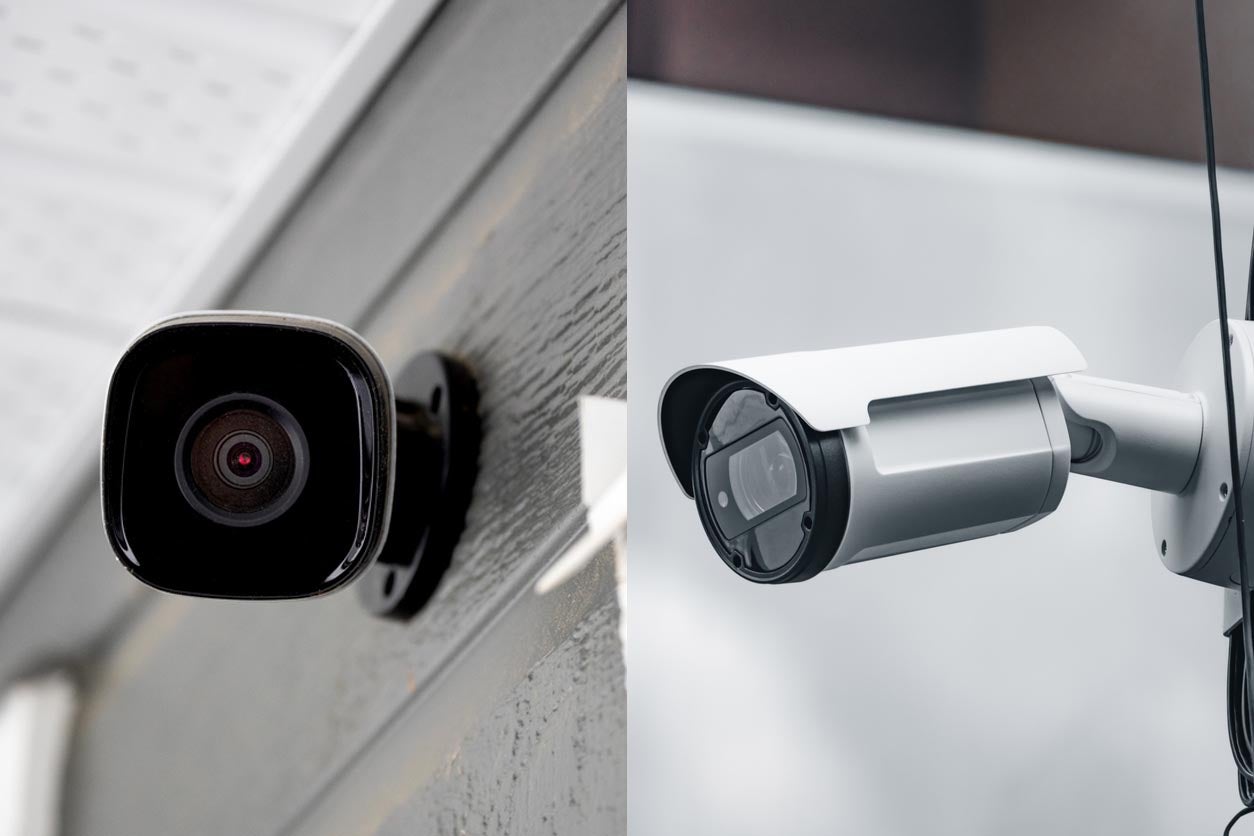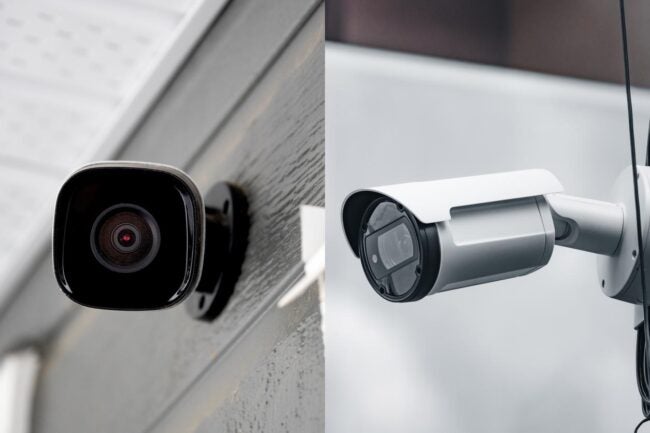8 Differences To Know Before You Choose
As security systems become easier to manage with mobile apps and are a more deeply integrated part of a smart-home system, more and more people are choosing to be involved in the selection of security equipment that is installed in their homes, regardless of whether they have hired a professional that knows how to install security cameras or selected from the increasing number of DIY security options. One question that often arises during the selection of equipment is whether wired or wireless security cameras are the better option.
Before getting into the pros and cons of each type of camera, it’s a good idea for customers to understand what to look for in a home security system and clarify what their options are. Wired security camera systems are connected by either coaxial cable or CAT5 or CAT6 cables to a recording device, and are powered through this cable. This makes sense—they’re called “wired” because a wire connects the device to the recorder. Wireless security camera systems use a home’s Wi-Fi service or cellular service to send video and recordings to a cloud or recording device, hence their name. However, wireless cameras do still require power to function. Some are battery-powered and therefore truly wireless, but most are connected to either a power outlet with a power cord or to a solar charging device, also with a cord. Thus, most wireless cameras are not completely wireless—but they do connect wirelessly to the video storage device.
So when it comes to comparing wired versus wireless security cameras, which one is the better choice? The answer depends on the circumstances and priorities of the home’s residents in terms of quality versus convenience.
1. Wired security cameras are typically designed for professional installation, which may come with an additional cost.
Wired security cameras do not usually require an electrical plug because they draw their power from the cable that connects them to the recording device. For most users this is a huge plus, since it means the cameras don’t have to be near a power source. They do, however, need physical wiring to connect to the digital video recorder that will…




